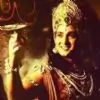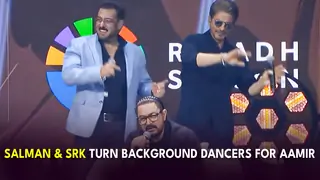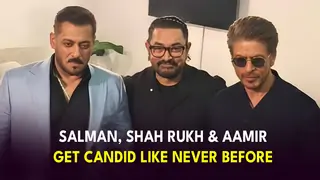Star network, which runs Star Plus, currently rated the No 1 channel, is not amused by this query. "It's like saying all newspapers look the same — they all have headlines and pictures and stories," he retorts. "Just as it was once trendy to trash Hindi films — usually by people who never saw Hindi films — it's now trendy to trash Indian television."
There is some truth to what Shankar says. It's easy to knock TV down because the medium itself is so unabashedly lowbrow. Even in countries with evolved television industries such as the USA, the idiot box is the target of much derision.
"It's the nature of the beast," laughs scriptwriter Venita Coelho, who worked in the television industry for several years before abandoning everything and escaping to Goa. "You need large volumes for TV and for large audiences; that's what gives it a mass-produced, assembly-line air." In an industry where 24 hours of airtime have to be filled with 'entertaining' programming, where the competition between channels is so intense and bitter, it would make Kane and Abel look like best friends. The inevitable casualty is The Idea.
Soaps begin but don't end
At the heart of the 'where-are-the-ideas' lament lies the Indian soap, the staple of all entertainment channels. "It is our daal-roti," says Rajesh Kamat, CEO of Colors, currently the No 2 channel in the country. It's tough to create new ideas within the genre, as soaps come with inbuilt limitations: they have a beginning but no end; instead they just have an endless middle. They are geared to creating emotional melodrama, not to plot or character development. Characters exist primarily for viewers to identify with and sympathise with as they go through their onscreen trials and tribulations.
"But soaps are another genre of story-telling altogether," says Uday Shankar impatiently. "A soap is not a film where a three-hour story begins and ends. Plot lines come and go but characters last."
He adds, "If you have consumers willing to give three or four years to watch a story day in and day out, why shouldn't you carry that story? Look at it in perspective. In India, viewership has a certain pattern. Outdoor life is restricted. There is a huge commitment to long-running stories. There's a need that exists in the marketplace and soaps fill that need."
Today there are about 135 million TV households in India (up from 25 million in 1992), out of which 80 per cent have a cable and satellite connection. The penetration into small towns and rural areas has been significant. To give just a small example: the share of DTH in rural markets has almost doubled in rural India in the last two years.
This new mass audience is what TV soaps primarily cater to. As Uday Shankar explains, "When you create content that is monetised through advertising revenue, you perforce have to create content that the largest number of people will watch."
Identify and crucify
Within this large audience, the most committed viewers are women. Enter the soap staple, the traditional family drama. Exit everything else. Says Rajesh Kamat, "Women viewers almost start living the life of the protagonists. It could be her story or her daughter's story." Admits Rajan Shahi, producer of two of Star Plus's biggest hits, Bidaai and Yeh Rishta Kya Kehlata Hai, "Soaps become an addiction. The characters enter your home every night for months. They become part of your family."
But all these facts — the inbuilt limitations of the genre, the need to cater to mass small-town audiences, the importance of women viewers – ensure that there is minimal room for experimentation or for the creation and execution of bold new ideas. For the moment, the industry is stuck in an eternal loop of emotional family dramas followed by more emotional family dramas.
All that the maker of a soap can aspire to do is shuffle about within the standard format. Says Rajan Shahi, "I try and be different within the framework of my social subjects. In Yeh Rishtaa…, for instance, you will notice that there is not a single negative character. Therefore the serial stands out in a sea of loud, crass, negative shows."
Or to backtrack a little, Balika Vadhu (Colors) was a differentiator because it was a story around a social issue which wasn't set in a big city. It was a breakthrough idea for soaps and spawned dozens of me-too shows.
Seasonal breaks
The predominance of soaps means there's very little chance to experiment with other formats — such as series and seasons, as the USA does. Whether it's The Wire or Sopranos, a particular story is told to the finish. Then the show takes a break and the writers roll up their sleeves and get down to the task of writing the next season. This allows them to create plot and character-driven stories. There is scope for intriguing, trend-setting new ideas – witness the latest series to seduce America, Mad Men, about a 1960s adman in New York.
But most television professionals believe that in India, seasons are a distant dream. Indian viewers want — no, need — their daily fix every night. Says Purnendu Shekhar, writer of the hit show, Balika Vadhu, "Over time, shows become brands. Even if a show is dragging on, channels are reluctant to take it off the air, because where's the guarantee that a new show will do well?" What makes matters worse is the sameness in approach. Soaps unfold in a cookie-cutter manner: identical reaction shots, trademark background music and effects. The comfort zone is so high, you can imagine directors literally dozing through the shooting, so similar do most of them appear in look and feel.
But some baby steps have been taken. Recently Sony introduced a primetime band dedicated to a clutch of very different shows, with not a single mother-in-law in sight. But the ratings were disappointing. Viewers couldn't relate to shows such as Powder, a gritty take on the underworld. Perhaps the sudden introduction of a hot chilli in a diet of syrupy rasogollas was too much for viewers to swallow. But there was also Mahi Way, a very urban and contemporary story about an overweight girl who worked in a fashion magazine in Delhi, which got a fan base but didn't get the ratings. (This is less surprising than it seems: stories abound in all TV industries all over the world of critically acclaimed shows with impressive fan followings which inexplicably get stuck with low ratings).
Good writing works
The encouraging part is that Sony does plans to bring another season of Mahi Way. "We didn't want to needlessly extend the story," says Ajit Thakur, Executive Vice-President, Sony. "Now the writers are working on the next season. And I'd like to believe that eventually such shows will work."
The fountainhead of new fiction ideas is of course the writer. If film is a director's medium, television is a writer's medium. But it's a strange paradox – on the one hand, there is a general lament that that there is a dearth of good writers, yet writers are treated with scant respect and there are few attempt by anyone — TV channels, production houses — to invest in writers workshops, talent spotting or to create entry points for new writers. Star Plus is trying to set things right in this direction: it has started sending out teams of people to college campuses in UP, Bihar, MP etc to hire budding, talented writers.
"We need to create a pipeline of talent," says Uday Shankar. "We've created a new unit in our company which is only dedicated to coming up with new ideas and developing them." Ekta Kapoor too scouts small town campuses for writers – but probably only to create and write the kind of shows she would like to do/the kind of shows channels would like to run, than to think out of the box.
Pressure of ratings
Currently, soap writers have the most unenviable job – not only do they have to write five episodes every week, they're also constantly under the pressure of ratings. Purnendu Shekhar confesses that when he was writing Saat Phere for Zee, towards the end of the serial's life, there was a great deal of interference from the channel to change the story. "Mostly I have been very lucky," he clarifies. "I have been allowed to work with freedom. The challenge is in trying to introduce new strands into the soap and yet merging them as part of the overall story."
It is true, as Uday Shankar points out, that content consumption changes very slowly. But it is equally true that, as in other fields, only if you zig when everyone else is zagging, will you bring new ideas into play. And that's tough to do in an industry as risk-averse as the TV industry. The stakes are too high, is the universal chorus.
Fear of failure is a powerful driving force, but often it will ensure that you do fail. Star Plus stuck with its mega successful shows (Kyunki Saas Bhi Kabhi Bahu Thi and Kahaani Ghar Ghar Ki) for far too long. Result: New entrant Colors took advantage of the fatigue factor nudged it out of the No 1 slot for several weeks last year.
Perhaps the TV industry should make a new entry to its book of rules: If it's already on air, don't do it. Think of a new idea.



















